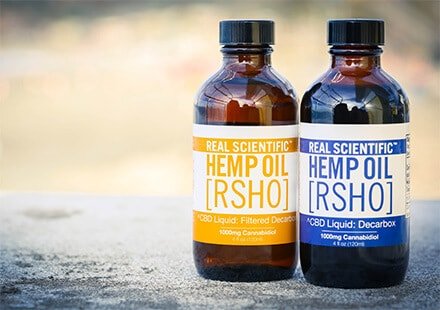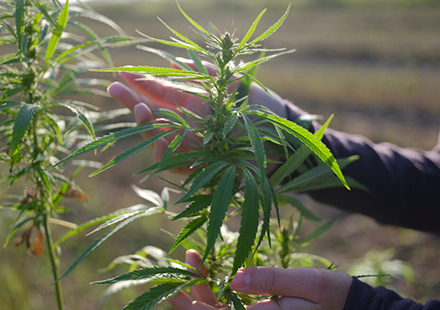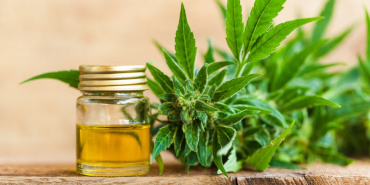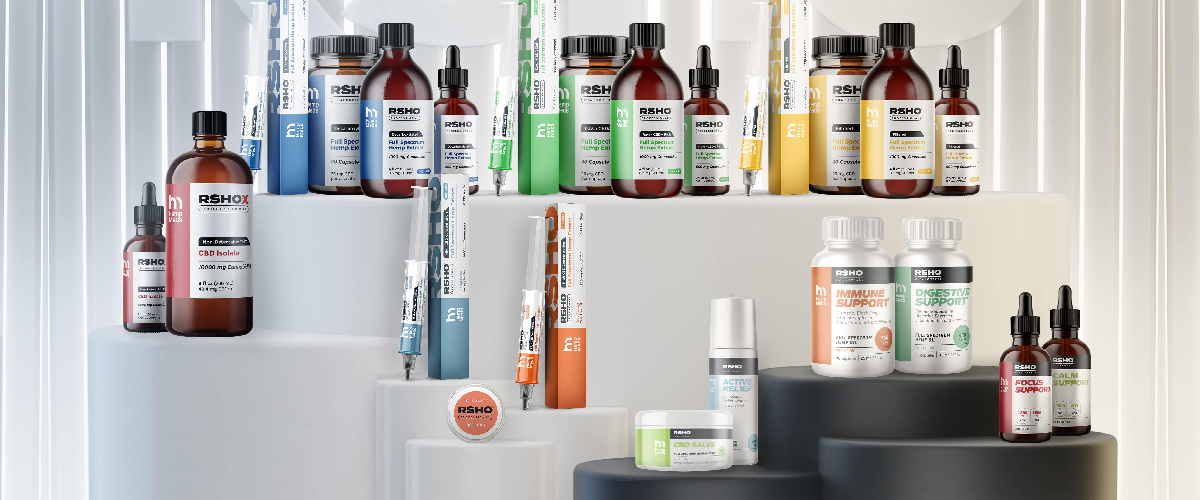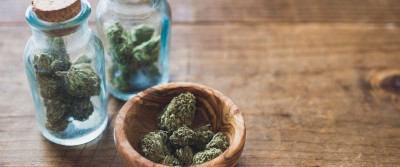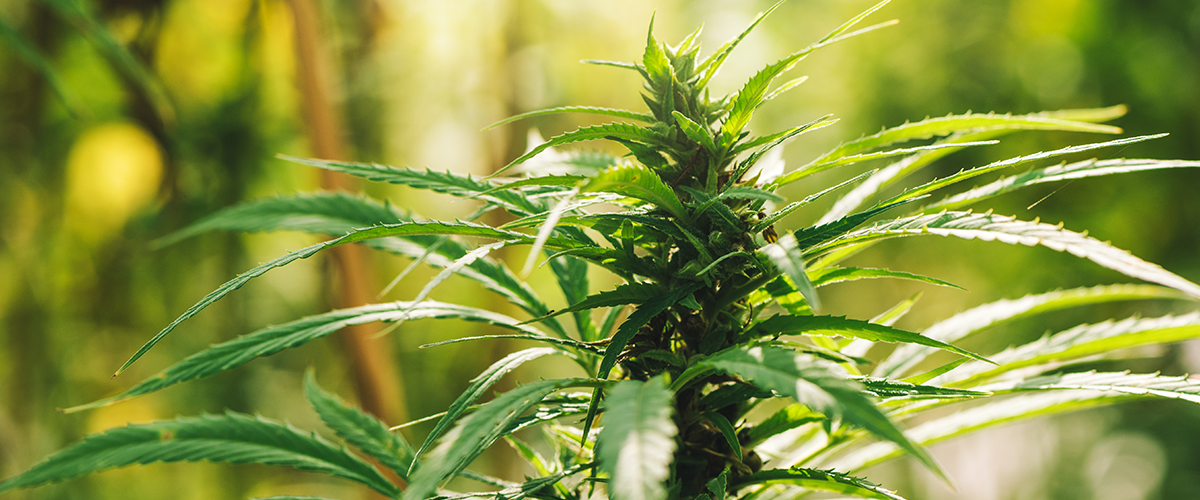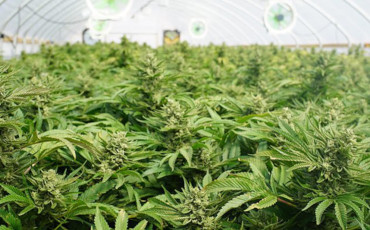Medical Marijuana, Inc.
WE ARE A COMPANY OF FIRSTS®
LEARN THE BASICS OF CBD
Learn the ABC’s of CBD: What it is, how it promotes well-being, and guidance on choosing the right CBD oil for your needs. Find all the information you need to get started.
WHAT IS CBD OIL? by Jeffrey Stamberger WHAT IS CBD IN SIMPLE TERMS? With the rapid rise in the…
Read More
Your Complete CBD Oil Buyer’s Guide
Here’s everything you need to know about CBD oil before you purchase it for the first time. Find the type CBD oil that fits your preferences, and learn how to…
Read More
THE ENDOCANNABINOID SYSTEM – AN OVERVIEWThe following information is presented for educational…
Read More
MOST RECENT
SHOP CBD PRODUCTS
Experience the natural benefits of our world-leading CBD oil. Choose from the highest quality, Triple Lab Tested® CBD oil concentrates, tinctures, capsules, topicals, and more.
SHOP CBD PRODUCTS
Experience the natural benefits of our world-leading CBD oil. Choose from the highest quality, Triple Lab Tested® CBD oil concentrates, tinctures, capsules, topicals, and more.
A Starter’s Guide to Medical Marijuana
Find easy-to-understand information on using medical marijuana, including how-to guides, tips on which types of cannabis products could be best for you, and explanations on what effects it can have.
Cannabis 101
Considering medical cannabis? Learn the basics of legally buying and using medical cannabis products and more.
Read More
MARIJUANA SIDE EFFECTSAs states around the U.S. legalize recreational and medical marijuana,…
Read More
CBD VS THC – WHAT IS THE DIFFERENCE?Of the many cannabinoids found in cannabis, THC and CBD are…
Read More
COMPANY NEWS
Stay up on our latest company developments, including press releases, media coverage, financial reports, and more.










Your Definitive Overview on Medical Marijuana

By now, you’ve likely become accustomed to hearing about medical marijuana seemingly everywhere. It’s being called a miracle drug and is widely regarded as the United States’ fastest growing industry.
With a truly mystifying amount of incorrect information out there on the subject, getting up to speed on the truth behind medical marijuana is surprisingly difficult. To make things easier, Medical Marijuana, Inc. is here with the fundamentals you need to know to decide if medical marijuana is right for you.
These are the basics of medical marijuana: what it is, why it might be good for you, how long it’s been around, whether it’s legal, and how you can get legal access where you live.
What is Medical
Marijuana?
Medical marijuana refers to using the whole cannabis plant, or the plant’s basic extracts, for the treatment of various ailments or conditions. If you’re not treating ailments or conditions, marijuana can’t be labeled medical marijuana.
People often confuse the terms cannabis and marijuana. Cannabis is a category for a plant species that includes both hemp and marijuana. For a lot of people, the best way to think about cannabis is with an analogy: hemp and marijuana are to cannabis as lemons and oranges are to citrus. Two related but different plants, from the same “family.”
The characteristic that defines marijuana from hemp is the content of tetrahydrocannabinol (THC), the compound in cannabis that gets users “high.” Hemp is almost entirely devoid of THC but often high in another cannabinoid – cannabidiol (CBD). Hemp has 0.3 percent THC or less while the threshold for marijuana starts at a THC concentration of 0.31 percent or higher. Both forms of cannabis, hemp and marijuana, have been shown to contain medically beneficial levels of differing cannabinoids, active compounds found in the cannabis plant.
Cannabis contains over 85 cannabinoids, some of which have been found to have therapeutically beneficial properties. The two major cannabinoids found in cannabis are cannabidiol (CBD) and tetrahydrocannabinol (THC), though a number of other cannabinoids, like cannabigerol (CBG) and cannabinol (CBN), have also been investigated.
These cannabinoids interact directly with the body’s endocannabinoid system – a signaling network found within every mammalian species on Earth. It features two cannabinoid receptors, CB1 and CB2 receptors, which THC and CBD “dock” with to provide their therapeutic effects. THC is the intoxicating ingredient found in higher concentrations in medical marijuana. CBD doesn’t cause an intoxicating effect like THC, but it can be taken to promote health and wellness. CBD Oil is one of the most popular ways to experience the benefits of CBD. Want to learn more? Medical Marijuana, Inc. is dedicated to sharing CBD facts and clearing up myths.
To date, marijuana has not been recognized or approved by the U.S. Food and Drug Administration (FDA) as a food or medicine, but the agency has approved some cannabis-based medications for distribution in the U.S. In addition, over half the states and territories in the U.S. have legalized marijuana for medical use, as long as patients have registered to obtain their state’s medical cannabis “card”.
What Are the Different
Types of Marijuana?
When researching the different types of marijuana, you’ll see they’re broken out into two major strains: Cannabis indica and Cannabis sativa. These taxonomical classifications, established in the 18th century after scientists recorded differences in the strains’ structure and resin production, vary in appearance, flowering time, yields, and flavor.
Many cannabis users and professionals within the cannabis industry allege that the two strains distinctly vary in the types of effects they offer a user. Indica strains, it’s commonly accepted, tend to induce physically sedating, relaxing, and full-body calming effects, while sativas are thought to produce an uplifting, energetic and cerebral reaction.
Some scientists claim, however, that the widely accepted variability in effects between the two strains is based on presentiments only. This placebo effect, the taxonomists argue, are not rooted in reality but stem from the preconceived expectations of the user. It’s true that no scientific studies have established that indica and sativa induce varying effects, and we do know that not every strain affects every patient in the same way.
How Long Has Medical Marijuana Been Around?
Cannabis has been used since at least the time of ancient China. Cannabis was first described in ancient Chinese texts.
Chinese Emperor Shennong wrote about using cannabis in a book published in 2737 BC.
With regard to the United States, marijuana has been long used. It wasn’t until 1937 when the U.S. passed a federal law banning cannabis. From that point on, cannabis was only legally available to a small number of patients through a federally organized program. In effect, this federal program allowed Americans to receive up to nine pounds of cannabis from the government each year, in 1976.
Despite this federal program, the vast majority of Americans found themselves shut out of access to marijuana. Then, in the 1990s, voter demand to legalize medical marijuana increased significantly. California was the first state to establish legal medical marijuana with a voter initiative passed in 1996. In the 20 years that have followed the historic passing of California’s Proposition 215, other states followed California’s lead, passing medical marijuana laws that allow patients access to legal cannabis with a doctor’s recommendation.
Today, 33 states and the District of Columbia allow patients to legally obtain and use medical marijuana, bringing potential access to over half of all American citizens. Despite the fact that marijuana continues to remain federally illegal, in October of 2009 the U.S. Department of Justice announced that they would not pursue medical marijuana participants or distributors who comply with state law.
Where Is
Medical
Marijuana
Legal?
State medical marijuana laws are typically created in one of two ways: either through a voter backed initiative like in California or through a state’s legislative body as in the case of Pennsylvania. While voter initiatives must be approved to be added to ballots only on election years, state lawmakers can introduce a medical marijuana bill whenever the state legislatures are in session.
So far, 33 states have established medical marijuana programs. These states include: Alaska, Arizona, Arkansas, California, Colorado, Connecticut, Delaware, Hawaii, Illinois, Louisiana, Maine, Maryland, Massachusetts, Michigan, Minnesota, Missouri, Montana, Nevada, New Hampshire, New Jersey, New Mexico, New York, North Dakota, Ohio, Oklahoma, Oregon, Pennsylvania, Rhode Island, Utah, Vermont, Washington, and West Virginia. In addition, Washington, DC and Puerto Rico allow medical marijuana for patients.
Additional states, while not offering comprehensive medical marijuana programs, have approved marijuana- based “low THC, high cannabidiol (CBD)” products for limited medical purposes. These states include Alabama, Florida, Georgia, Iowa, Kentucky, Mississippi, North Carolina, South Carolina, Tennessee, Texas, Virginia, Wisconsin, and Wyoming.
Alternatively, CBD oil products that are derived from hemp are legal to purchase and use in the United States without a visit to a doctor, a medical marijuana card, or paying a state enrollment fee. Made with naturally high-CBD, low-THC hemp, these products contain the same levels of CBD as CBD oils sold in medical marijuana dispensaries.
HOW DO YOU GET LEGAL
MEDICAL MARIJUANA?
Medical marijuana is only legally available in the states and territories that have established medical marijuana programs. The conditions and ailments that are approved for medical marijuana treatment vary, so you’ll need to first determine whether your condition is included on your respective state’s list of qualifying conditions. For up to date information on state marijuana laws, visit our Where is Marijuana Legal? page.
The rules and requirements for acquiring legal medical marijuana also fluctuate widely between each individual state and territory.
In general, you’ll need to visit your doctor who, if feeling that you and your condition would benefit from medical marijuana, will write you a recommendation. Because the FDA does not consider marijuana an approved medication, your doctor cannot prescribe it and your insurance will not cover it. Your doctor’s recommendation, however, authorizes you to move forward in the approval process.
In some states, like California, a signed doctor’s recommendation (and a state photo ID) is enough to gain access to medical marijuana dispensaries (authorized marijuana distributors) and offers some protections for patients when purchasing and transporting their marijuana.
Other states will require you to obtain a state issued medical marijuana “card”. Often this will include being placed in the state’s respective record system. You will then be allowed to buy marijuana from a state approved dispensary or (in some states) delivery service. Depending on your state of residence, there may be an enrollment fee needed to apply for a medical marijuana card, costing up to $200.
Once you have access to a marijuana distributor, you’ll have the option between a number of different options for using legal medical cannabis. Dried marijuana flower is still the most popular form, but a growing number of states have banned smokable marijuana in their programs. Other choices include tincture sprays, capsules, vapes, concentrated extracts, and edibles. For those looking for external applications, balms, salves, and lotions can be rubbed directly into the muscles, joints, and skin for focused relief. There are even dermal patches that can be placed on the skin for delayed release through the day.
WHAT ARE THE DIFFERENT METHODS FOR CONSUMING MEDICAL MARIJUANA?
With medicinal marijuana uses and benefits covered, let’s dive into how it’s consumed.
Smoking has historically been the most common method for consuming marijuana. Devices like rolling papers, hand pipes, water pipes and hookahs are used to ignite the dry herb, releasing its cannabinoids and other natural compounds. With smoking, the cannabinoids reach the bloodstream and elicit effects very quickly.
Cannabis material can also be infused into various foods to make medical marijuana edibles. Popular among those who prefer to avoid smoking, edibles are now available in an array of food products, including chocolate bars, chews, and cookies. Because edibles are metabolized, their effects take longer to kick in and can last several hours.
Health-conscious marijuana consumers commonly elect to vaporize their cannabis products. Vaporizers use convection heating to heat up the dry herb or wax concentrates until they reach their boiling point, releasing the cannabis material’s cannabinoids and other natural compounds as a clean vapor. By inhaling the pure vapor, the compounds promptly reach the bloodstream and effects are felt as instantaneously as when smoking. However, because vaporizing doesn’t involve combustion, it eliminates the exposure to all of smoking’s toxins, carcinogens, and other harmful chemicals that can damage the throat and lungs.
Other “smokeless” marijuana products, concentrates, are growing in popularity as well. Concentrates include kief, hash, wax, and marijuana shatter.
WHAT IF YOU LIVE WHERE
MARIJUANA IS NOT LEGAL?
Even if you live in a state where marijuana is not legal, there are ways to enjoy the natural wellness properties of cannabis.
Chief among them is CBD hemp oil, the natural botanical extract of the hemp plant, which can be purchased and delivered to residents of the United States without violating federal cannabis laws.
CBD hemp oil is derived from the hemp plant, a particular variety of cannabis. While you can find hemp oil in many local stores, store-bought hemp oil is usually derived from hemp seeds and doesn’t contain the significant concentration of CBD that hemp CBD oil concentrate contains. Hemp oil extracted from the stalk, instead of the seed, is abundant in CBD, as well as essential vitamins, minerals, fatty acids, terpenes, flavonoids, fiber and protein, and other trace cannabinoids. CBD hemp oil products come in a range of applications, like capsules, topicals, vapes, tinctures, energy chews, and even beauty products.
ARE THERE ANY TIPS OR CONSIDERATIONS REGARDING SAFETY WITH MARIJUANA?
While cannabis is thought to be safe, there are some preventative safety measures you can take to lower your side of adverse events.
Cannabis users may need to take some precautions because of the euphoric side effects that some marijuana products can elicit. Products containing THC can temporarily cause drowsiness, as well as impaired memory and reaction time. It’s therefore recommended that those using marijuana not operate machinery or drive a vehicle after consuming cannabis.
Marijuana consumers also need to be careful about purchasing products that come from cannabis that has been treated by pesticides. Pesticide residue has been discovered in cannabis products ranging from flower to concentrates to edibles. The danger with pesticide residue is that it can make its way into your bloodstream, increasing the risk of some health problems. With the legal cannabis industry being relatively young, many regulations, including those regarding testing standards, are still being fleshed out. Check to see whether an ISO-certified laboratory has tested any cannabis products you purchase.
If you’re taking other medications, it’s a good idea to consider potential drug interactions.
Additionally, marijuana may increase the risk of bleeding when taken with other drugs, herbs or supplements that also increase the risk of bleeding.
Find out more about medical marijuana’s side effects.

